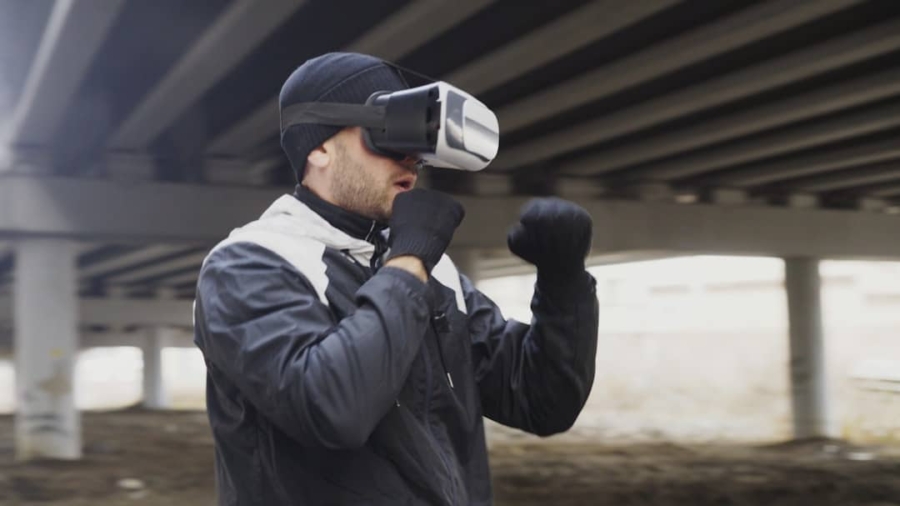Gamification, the application of game-design elements in non-game contexts, has emerged as a transformative approach in the realms of fitness and health. By integrating elements such as points, badges, leaderboards, and challenges into health-related activities, gamification seeks to enhance user engagement and motivation. This innovative strategy has gained traction in recent years, particularly as technology has advanced and the prevalence of smartphones and wearable devices has increased.
The intersection of gaming mechanics with health initiatives not only makes the pursuit of fitness more enjoyable but also fosters a sense of community among users, encouraging them to achieve their health goals collectively. The rise of gamification in fitness and health can be attributed to a growing recognition of the importance of behavioral change in achieving long-term wellness. Traditional methods of promoting physical activity often fall short due to a lack of sustained motivation or engagement.
Gamification addresses these challenges by tapping into intrinsic motivations, such as competition, achievement, and social interaction. As individuals navigate their fitness journeys, they are not merely completing tasks; they are participating in a dynamic experience that rewards their efforts and celebrates their progress. This shift in perspective is crucial for fostering a culture of health that is both sustainable and enjoyable.
Key Takeaways
- Gamification is the use of game design elements in non-game contexts, such as fitness and health, to motivate and engage people in achieving their goals.
- The psychology behind gamification shows that it can positively impact behavior change by tapping into intrinsic motivators, such as autonomy, mastery, and purpose.
- Gamified fitness apps have been shown to effectively encourage physical activity by providing rewards, challenges, and social support to users.
- Gamification in corporate wellness programs can benefit employee health by increasing engagement, promoting healthy behaviors, and fostering a sense of community.
- Personalized health and fitness tracking through gamification allows individuals to set and achieve personalized goals, leading to better adherence and long-term behavior change.
The Psychology Behind Gamification and its Impact on Behavior Change
Understanding the psychological principles that underpin gamification is essential for grasping its effectiveness in promoting behavior change. One key concept is the idea of intrinsic versus extrinsic motivation. Intrinsic motivation refers to engaging in an activity for its inherent satisfaction, while extrinsic motivation involves performing an action to earn rewards or avoid negative consequences.
Gamification often leverages extrinsic motivators—such as points or badges—to encourage users to engage in healthy behaviors. However, successful gamification strategies also cultivate intrinsic motivation by making activities enjoyable and rewarding in themselves. Another psychological principle at play is the concept of flow, introduced by psychologist Mihaly Csikszentmihalyi.
Flow occurs when individuals are fully immersed in an activity that challenges their skills while providing immediate feedback. Gamified fitness experiences are designed to create this state by offering progressively challenging tasks that keep users engaged without overwhelming them. For instance, a running app might set personalized distance goals that adapt based on the user’s performance, ensuring that they remain challenged yet capable.
This balance is crucial for maintaining motivation over time and fostering a commitment to regular physical activity.
Gamified Fitness Apps and Their Effectiveness in Encouraging Physical Activity

The proliferation of gamified fitness apps has revolutionized how individuals approach exercise and physical activity. Apps like Strava, MyFitnessPal, and Fitbit have successfully integrated gamification elements to create engaging experiences that encourage users to stay active. Strava, for example, allows users to track their runs and rides while competing against friends or other users on specific segments of their routes.
This competitive aspect not only motivates individuals to push their limits but also fosters a sense of community among users who share similar fitness goals. Research has shown that gamified fitness apps can significantly increase physical activity levels among users.
The study highlighted that the social features—such as sharing achievements and competing with friends—were particularly effective in driving engagement. By creating a supportive environment where users can celebrate each other’s successes, these apps harness the power of social influence to promote healthier behaviors.
Gamification in Corporate Wellness Programs and its Benefits for Employee Health
Corporate wellness programs have increasingly adopted gamification strategies to enhance employee engagement and improve overall health outcomes. By incorporating game-like elements into wellness initiatives, companies can create a more dynamic and motivating environment for their employees. For instance, organizations may implement step challenges where teams compete to achieve the highest number of steps over a month, with rewards for the winning team.
This not only encourages physical activity but also fosters camaraderie among employees, enhancing workplace relationships. The benefits of gamification in corporate wellness programs extend beyond increased physical activity. Research indicates that engaged employees are more productive, have lower healthcare costs, and exhibit higher job satisfaction.
A study conducted by the American Journal of Health Promotion found that companies implementing gamified wellness programs experienced a significant reduction in healthcare costs over time. By promoting healthy behaviors through engaging activities, organizations can cultivate a healthier workforce while simultaneously reaping financial benefits.
The Role of Gamification in Personalized Health and Fitness Tracking
Personalization is a critical component of effective health and fitness tracking, and gamification plays a vital role in tailoring experiences to individual users. Many fitness apps now utilize data analytics to provide personalized feedback based on users’ activity levels, preferences, and goals. For example, an app might analyze a user’s workout history to suggest tailored challenges or workouts that align with their interests and fitness level.
This level of customization not only enhances user experience but also increases the likelihood of sustained engagement. Moreover, gamified tracking systems often incorporate visual progress indicators, such as graphs or achievement badges, which serve as motivational tools for users. These visual cues provide immediate feedback on progress toward goals, reinforcing positive behaviors and encouraging users to continue their efforts.
The combination of personalization and gamification creates a powerful synergy that empowers individuals to take ownership of their health journeys while making the process enjoyable and rewarding.
Gamification in Rehabilitation and its Potential for Improving Patient Adherence

Gamification has also found its place in rehabilitation settings, where it holds promise for improving patient adherence to treatment protocols. Traditional rehabilitation programs can often be monotonous and challenging for patients, leading to decreased motivation and compliance. By incorporating gamified elements into rehabilitation exercises—such as point systems for completing tasks or virtual rewards for reaching milestones—healthcare providers can create a more engaging experience for patients.
For instance, virtual reality (VR) rehabilitation programs have emerged as innovative solutions that combine gamification with immersive technology. Patients recovering from injuries can engage in VR environments where they complete therapeutic exercises while earning rewards for their progress. This approach not only makes rehabilitation more enjoyable but also encourages patients to adhere to their treatment plans by providing immediate feedback and positive reinforcement.
As research continues to explore the efficacy of gamified rehabilitation programs, early findings suggest that they may lead to improved outcomes and higher levels of patient satisfaction.
Ethical Considerations in Gamifying Fitness and Health
While gamification offers numerous benefits in promoting health and fitness, it also raises important ethical considerations that must be addressed. One concern is the potential for creating unhealthy competition among users, particularly in social settings where individuals may feel pressured to outperform others at the expense of their well-being. This competitive atmosphere can lead to negative outcomes such as burnout or injury if individuals push themselves beyond their limits in pursuit of rewards or recognition.
Additionally, there is the risk of oversimplifying complex health behaviors through gamification. Reducing health and fitness journeys to mere points or badges may undermine the multifaceted nature of well-being, which encompasses physical, mental, and emotional aspects. It is crucial for developers and practitioners to strike a balance between engaging users through gamification while ensuring that they promote holistic approaches to health that prioritize long-term sustainability over short-term achievements.
Future Trends and Innovations in Gamification for Health and Fitness
As technology continues to evolve, so too will the landscape of gamification in health and fitness. One promising trend is the integration of artificial intelligence (AI) into gamified applications, allowing for even more personalized experiences based on real-time data analysis. AI-driven algorithms could adapt challenges dynamically based on user performance, preferences, and even mood, creating an increasingly tailored approach to fitness that resonates with individual motivations.
Moreover, advancements in wearable technology are likely to enhance the gamification experience further.
As these technologies become more sophisticated, they will enable users to engage with their health journeys in ways that are not only fun but also deeply meaningful.
In conclusion, the future of gamification in health and fitness holds immense potential for transforming how individuals approach their well-being. By harnessing the power of technology and psychology, gamified experiences can foster lasting behavior change while making the pursuit of health an enjoyable journey rather than a chore. As we look ahead, it will be essential for stakeholders across various sectors—healthcare providers, app developers, employers—to collaborate in creating innovative solutions that prioritize user engagement while addressing ethical considerations inherent in this evolving field.
In the article “Exploring the Role of Gamification in Fitness and Health,” the integration of game-like elements into fitness routines is discussed as a way to enhance motivation and engagement. A related article that delves into the technological advancements that can support such gamification efforts is “Unlock a New World of Possibilities with Samsung Galaxy Z Fold4.” This article highlights the innovative features of the Samsung Galaxy Z Fold4, which can be leveraged to create immersive and interactive fitness experiences. For more information, you can read the full article here.
FAQs
What is gamification in the context of fitness and health?
Gamification in fitness and health refers to the use of game design elements, such as points, rewards, and competition, to motivate and engage individuals in physical activity and healthy behaviors.
How does gamification impact fitness and health?
Gamification can increase motivation, engagement, and adherence to fitness and health goals by making activities more enjoyable, providing a sense of achievement, and fostering a supportive community.
What are some examples of gamification in fitness and health?
Examples of gamification in fitness and health include fitness apps that track and reward physical activity, wearable devices that provide real-time feedback and challenges, and online platforms that offer virtual fitness challenges and competitions.
What are the potential benefits of incorporating gamification into fitness and health programs?
The potential benefits of gamification in fitness and health programs include increased physical activity, improved adherence to healthy behaviors, enhanced motivation, and the creation of a supportive and social environment for individuals pursuing their fitness and health goals.
Are there any potential drawbacks or limitations to gamification in fitness and health?
Some potential drawbacks or limitations of gamification in fitness and health include the risk of overemphasis on competition, potential for disengagement after novelty wears off, and the need for careful consideration of individual preferences and motivations.

